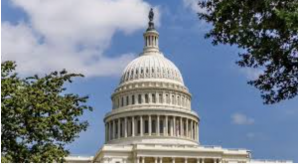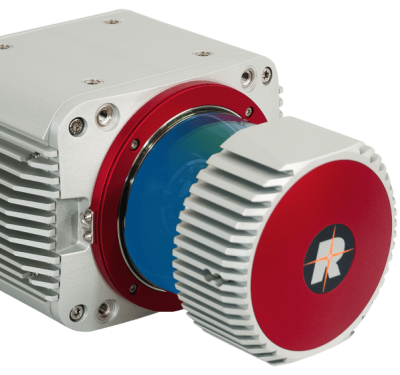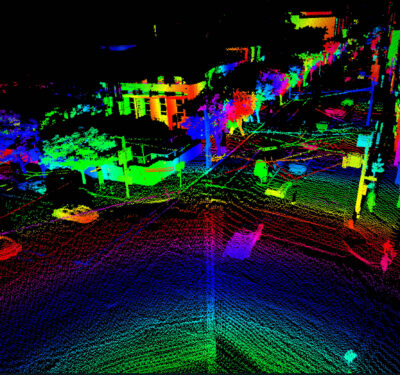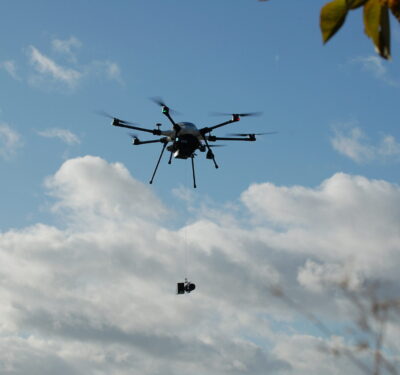
On the cusp of Christmas, Congress offered up the best gift of all: a bipartisan appropriations act. Much coverage has focused on the $900 billion “COVID Relief,” but, now that the president has signed the bill, multiple sugarplums for the unmanned systems industry can be found tucked away within its 5000-plus pages.
Here are the three sweetest ones:
#1—Counter-UAS (CUAS) Czar. After years of industry chatter, the bill amends Title III of the Homeland Security Act of 2002 to create a Countering Unmanned Aircraft Systems Coordinator, a Senior Executive Service (SES) position and “appropriate staff” within that department’s Office of Strategy, Policy and Plans. The Coordinator will have internal oversight on: CUAS guidance and regulation development; promotion of CUAS R&D, info collection and intel sharing; liaising with other agencies; and carrying out relevant CUAS authorities and activities for critical infrastructure under section 210G of the Homeland Security Act. The coordinator also will ensure a CUAS rollout in accordance with applicable Federal laws. This could be a boon for CUAS companies and institutions engaging in CUAS R&D.
#2—Last Mile Drone Delivery. The COVID-19 crisis has ironically been an innovation incubator, especially around drone deliveries. Congress wants to see more of this, and the ‘‘American Competitiveness Of a More Productive Emerging Tech Economy Act’’ or the ‘‘American COMPETE Act” at Section 1501 directs the Secretary of Commerce to generate a study with the FAA and the three-letter security agencies on how drone delivery services impact U.S. businesses.
For external entities, the focus is on exploring which industries are developing and using drone delivery systems, current challenges to doing so and potential future use. Congress cited two general areas for exploration: delivering necessities to senior and disadvantaged citizens, and addressing similar needs during public health emergencies. A catch-all inclusion (“any other potential use of such services”) could signal an appetite to get creative with use cases. Not surprisingly, Congress wants the study to also identify safety and traffic risks, as well as the amount of software, technology and infrastructure being developed and manufactured in the U.S for drone delivery lest jobs be lost, or substantially and negatively changed.
Congress also seeks to understand the jurisdictions and interagency coordination around current drone delivery sectors. In what’s become a frequent theme, Congress wants to appreciate imminent supply chain risks, particularly from “foreign governments or third parties.”
The final report must contain study results and recommendations for both a strategy and comprehensive drone delivery adoption plan, including policy, legislation and risk mitigation.
#3—Federal R&D and UAS Acquisitions. Remaining UAS provisions relate to funding specific drone fleets or R&D across the federal government:
- Department of Justice: The Office of Justice Programs Research, Evaluation and Statistics will get “not less than $2,000,000” for supporting CUAS systems in law enforcement operations. The trickle-down will flow to companies who get in line to do this R&D work.
- DHS: The U.S. Customs and Border Protection (CBP) is getting nearly a $13 billion lump sum, which will include UAS purchase, maintenance and operation (Section 1801). CPB is also getting almost $2 million in multi-year funding to procure, construct and improve, among other things, UAS. Section 1103 also requires DHS to conduct a tech needs and updates analysis along the Southern border, which can involve UAS and CUAS tech.
- Department of Transportation: Section 190 permits DOT to use its operating funds to purchase, maintain, operate and deploy UAS that advance its mission.
- Army Corps of Engineers: A hyper-specific provision in Section 226 requires the Corps to report on its 10-year dataset relating to antecedent hydrologic conditions in the Missouri River Basin. Congress wants to know whether the corps is using UAS for advanced data collection including forecasting and modeling. This telegraphs that Congress expects folks to be using UAS if and when possible.
Collectively, all the insertions into the omnibus spending bill suggest that CUAS, last-mile deliveries and widespread federal use of UAS could mark a prosperous new year for business that follow the money. Happy New Year!
This piece has been updated to reflect the bill’s signing by President Trump.
*The views and opinions in this article are those of the author and do not reflect those of the DOD, do not constitute endorsement of any organization mentioned herein and are not intended to influence the action of federal agencies or their employees.
Dawn M.K. Zoldi (Colonel, USAF, Retired) is a licensed attorney and a 25-year Air Force veteran. She is an internationally recognized expert on unmanned aircraft system law and policy, a recipient of the Woman to Watch in UAS (Leadership) Award 2019, and the CEO of P3 Tech Consulting LLC.






